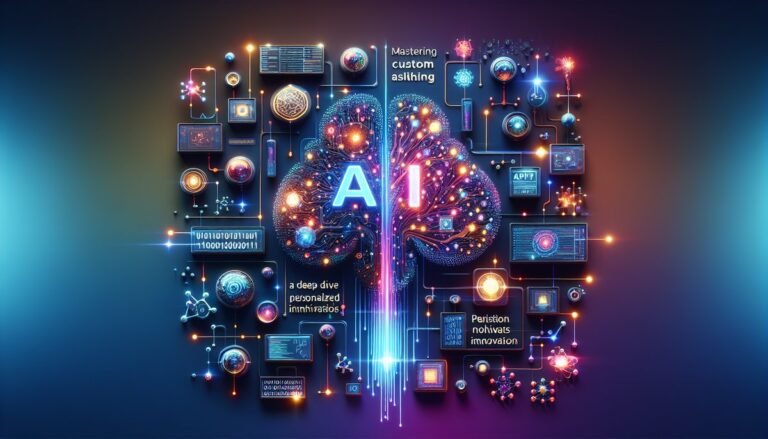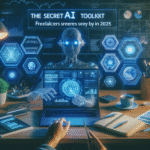In recent years, the fusion of Deep Learning and Alzheimer’s screening has opened new doors in the realm of early diagnosis and treatment. As this powerful technology continues to evolve, its impact on healthcare becomes increasingly profound. Deep Learning Alzheimer’s Screening is not just a buzzword; it’s a transformative approach that is reshaping how clinicians identify and manage this complex disease. By harnessing the capabilities of advanced algorithms, researchers and medical professionals are achieving unprecedented precision and efficiency in detecting early signs of Alzheimer’s. This listicle delves into seven breakthrough ways deep learning is enhancing Alzheimer’s screening, offering insights into how these cutting-edge techniques are poised to revolutionize patient outcomes. From enhancing diagnostic accuracy to facilitating personalized treatment plans, each method presents a unique advantage in the ongoing battle against cognitive decline. Dive in to discover how these innovations are setting new standards in neurological care.
1. The Role of Deep Learning in Medical Imaging
Deep learning, particularly in the realm of medical imaging, has become a pivotal tool in enhancing Alzheimer’s disease screening. By harnessing the capabilities of deep learning, researchers can analyze complex patterns in brain scans that may be imperceptible to human eyes. This advanced analysis is crucial in identifying early symptoms of Alzheimer’s, which can significantly improve patient outcomes through earlier intervention.
Traditionally, medical imaging relied heavily on the expertise of radiologists. However, deep learning models, such as convolutional neural networks (CNNs), have revolutionized this field. These models can process vast amounts of imaging data quickly and with remarkable accuracy, making them indispensable in Alzheimer’s screening. By integrating deep learning into the diagnostic process, healthcare providers can offer more reliable assessments, potentially reducing the burden of Alzheimer’s as the global population ages.
2. Enhancing Diagnostic Accuracy with Pattern Recognition
One of the standout features of deep learning models is their ability to detect intricate patterns within datasets, a capability that is particularly beneficial for Alzheimer’s screening. As the disease progresses, certain patterns and anomalies in brain structure become apparent. Deep learning algorithms can meticulously analyze these changes, offering a more precise diagnostic tool.
For instance, pattern recognition in deep learning can differentiate between normal aging-related changes and those indicative of Alzheimer’s. This distinction is crucial, as it ensures that patients receive targeted treatment plans. By leveraging these patterns, deep learning Alzheimer’s screening methods can reduce misdiagnosis rates, ultimately leading to better patient care and resource allocation.
3. The Integration of Multi-modal Data
Deep learning models are not limited to a single type of data; they can integrate diverse data sources to enhance Alzheimer’s screening. This multi-modal approach combines information from MRI scans, clinical data, and even genetic tests, providing a comprehensive view of a patient’s condition.
By synthesizing data from various modalities, deep learning models offer a holistic perspective that is invaluable in diagnosing Alzheimer’s. This integration is particularly pertinent in addressing the complexities of the disease, allowing for a more nuanced understanding of how different factors contribute to its progression. Consequently, patients benefit from more personalized and effective treatment strategies, showcasing the profound impact of deep learning Alzheimer’s screening in the medical field.
4. Reducing Screening Costs with Automated Analysis
One of the significant challenges in Alzheimer’s screening is the associated costs. Traditional methods require considerable time and resources, which can be a barrier to widespread screening. However, deep learning models offer a cost-effective alternative through automated analysis.
These models can process large volumes of data, such as brain scans, at a fraction of the cost and time required by human experts. This efficiency not only reduces the financial burden on healthcare systems but also makes screening more accessible to populations that may have previously been underserved. As a result, deep learning Alzheimer’s screening plays a crucial role in democratizing healthcare access amid the aging crisis.
5. Early Detection through Predictive Modeling
Another transformative application of deep learning in Alzheimer’s screening is its predictive modeling capabilities. Predictive models can analyze current data to forecast future outcomes, which is vital for diseases like Alzheimer’s that develop over time.
By identifying individuals at high risk of developing Alzheimer’s before symptoms manifest, healthcare providers can implement preventative measures to slow disease progression. Deep learning Alzheimer’s screening not only aids in early detection but also empowers patients and families to make informed decisions about their healthcare journey. This proactive approach is essential in managing the growing impact of Alzheimer’s worldwide.
6. Accelerating Research and Development
The rapid advancements in deep learning technologies have accelerated research and development in Alzheimer’s disease treatment. By providing tools that can quickly analyze and interpret complex data, deep learning models facilitate the discovery of new insights and potential therapeutic targets.
Researchers can now conduct large-scale studies with greater efficiency, exploring innovative approaches to Alzheimer’s treatment. The ongoing evolution of deep learning Alzheimer’s screening not only enhances current diagnostic practices but also paves the way for future breakthroughs in combating this pervasive disease. As deep learning continues to evolve, its role in advancing Alzheimer’s research remains crucial in addressing the challenges of an aging population.
7. Personalized Treatment Plans via Deep Learning Insights
Deep learning Alzheimer’s screening is instrumental in the development of personalized treatment plans. By analyzing individual patient data, these models can identify specific characteristics and risk factors unique to each person.
This personalized approach ensures that treatment plans are tailored to the patient’s needs, optimizing the effectiveness of interventions and therapies. With deep learning insights, healthcare providers can offer more targeted solutions, improving the quality of life for those living with Alzheimer’s. In the face of an aging population, personalized care becomes increasingly important, highlighting the transformative potential of deep learning in healthcare.
Charting a New Course in Alzheimer’s Screening
The integration of deep learning models into Alzheimer’s screening represents a pivotal advancement amid the global aging crisis. By enhancing early detection and diagnostic accuracy, these models offer a promising avenue to alleviate the burden on healthcare systems and improve patient outcomes. The listicle highlighted various groundbreaking approaches, each contributing uniquely to this transformative field. Looking ahead, the potential for AI-driven innovations in healthcare is vast and largely untapped. As society continues to grapple with an aging population, it becomes increasingly vital to explore beyond conventional technologies, embracing AI’s full potential. Such advancements not only promise more efficient diagnostics but also herald a future where healthcare is more accessible and personalized. As we stand at the cusp of this new era, the synergy between deep learning and medical practice is poised to reshape our approach to both aging and disease management.






